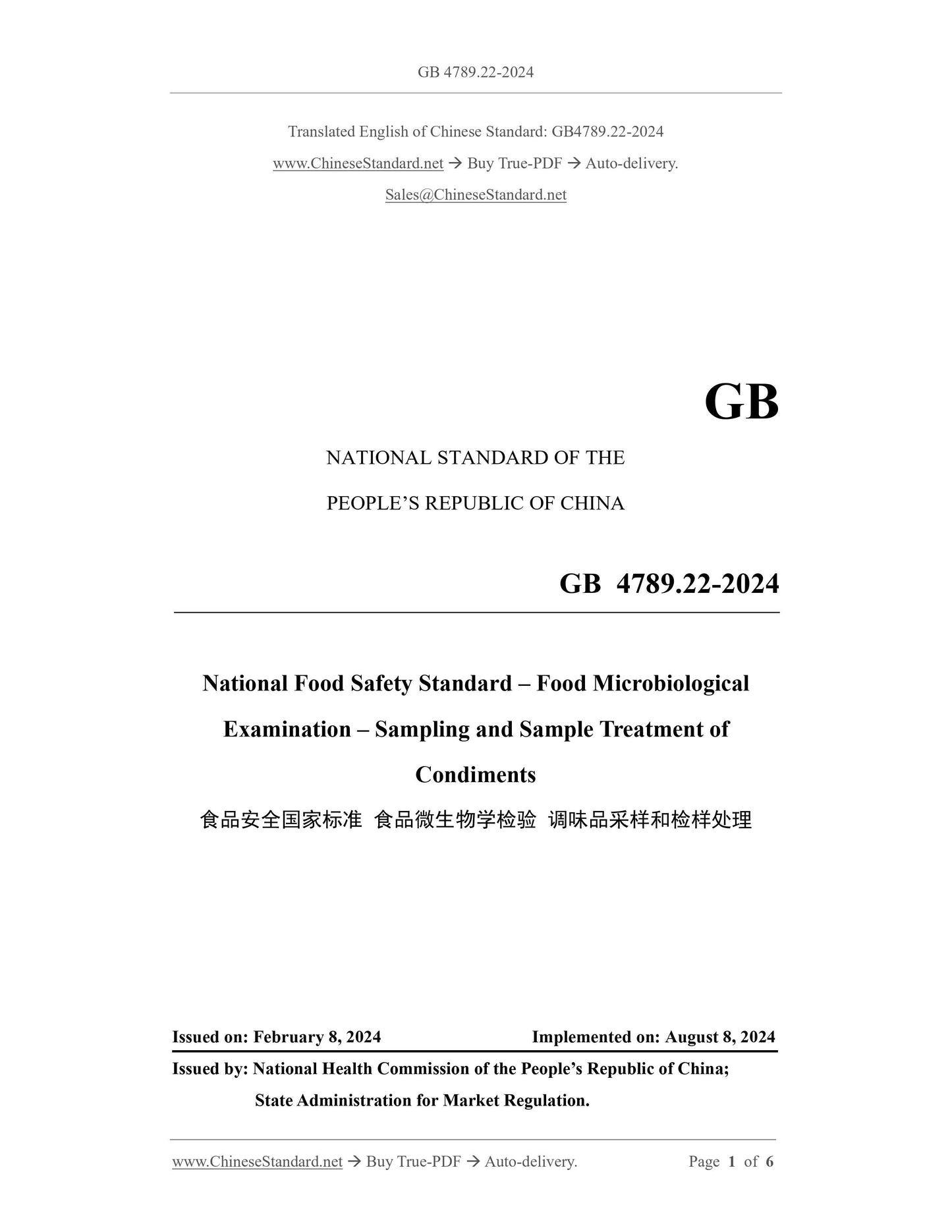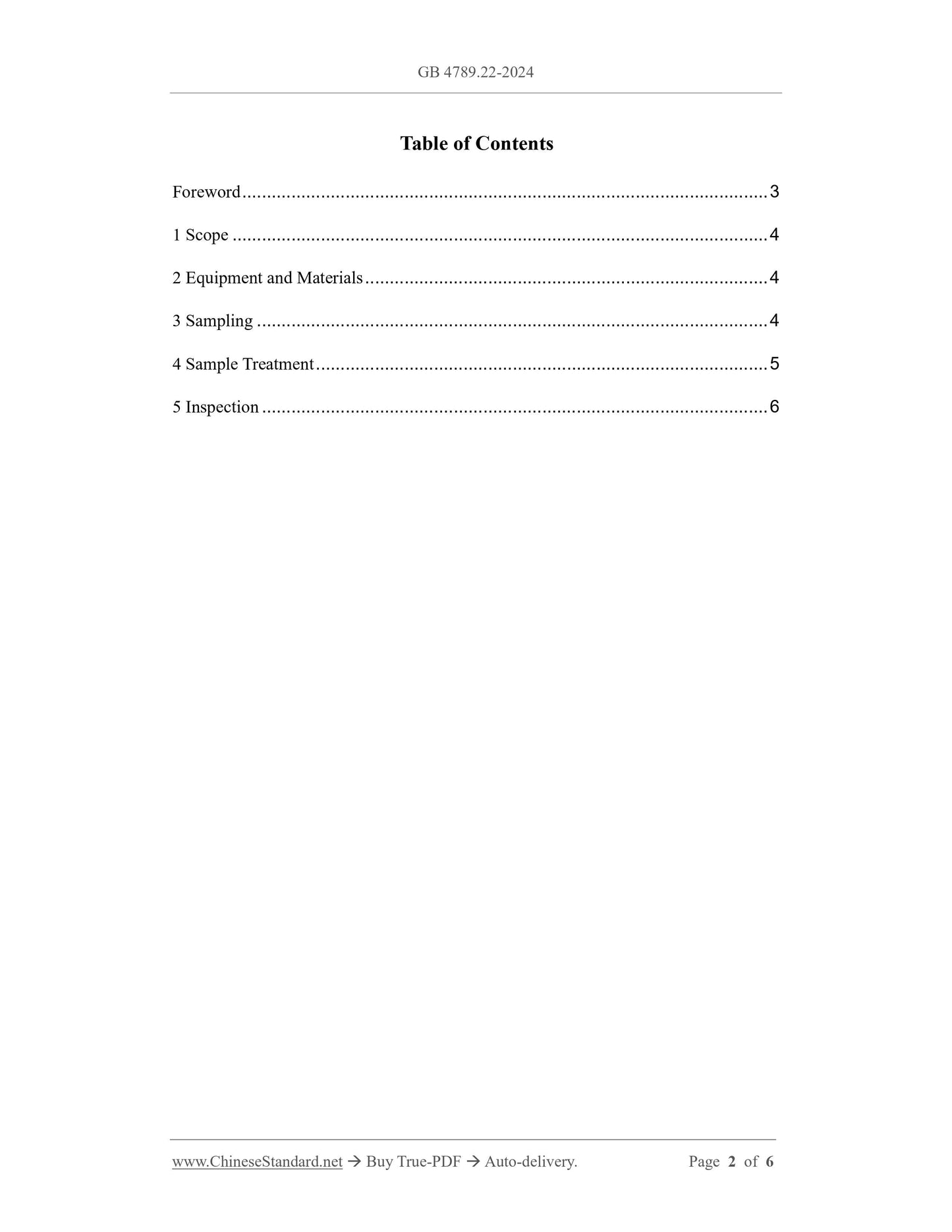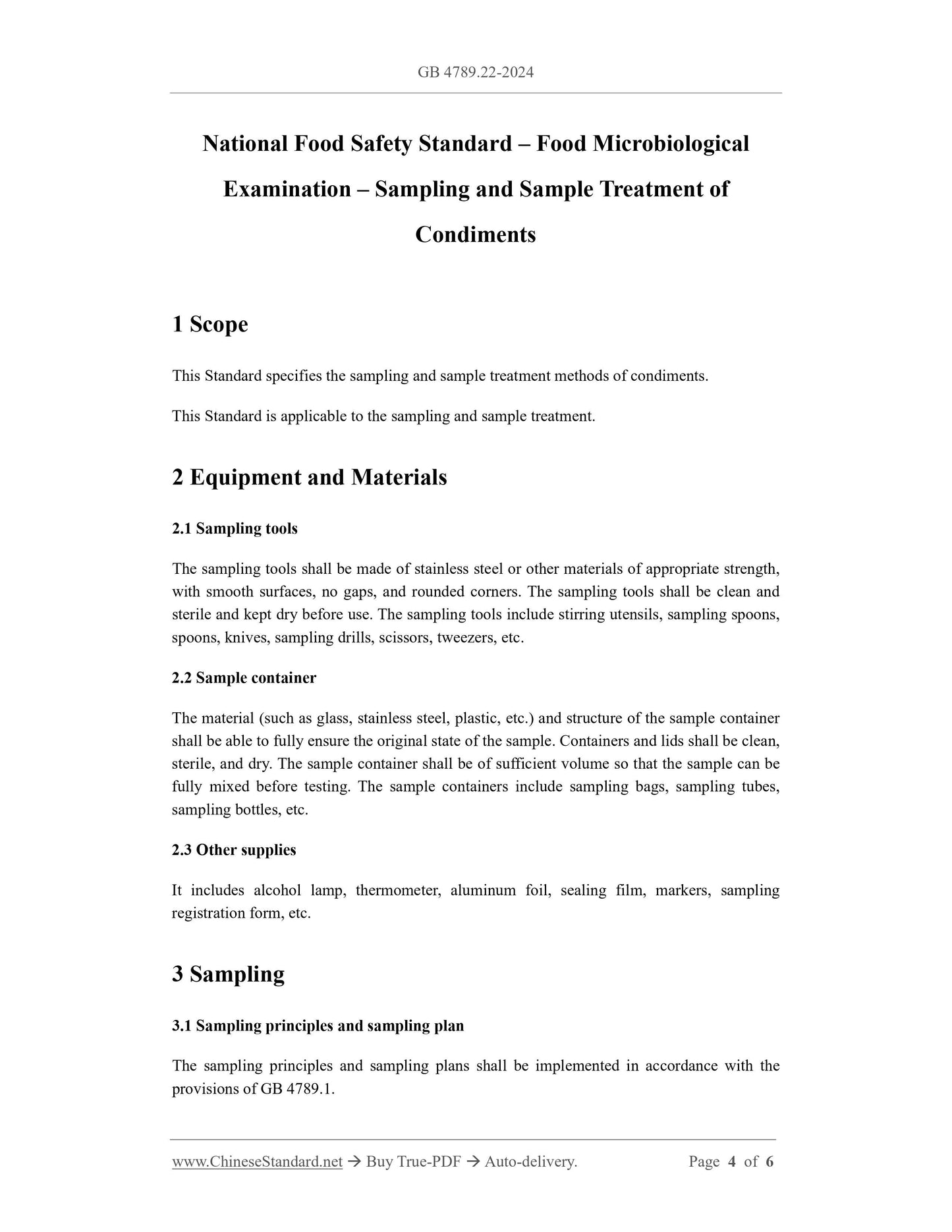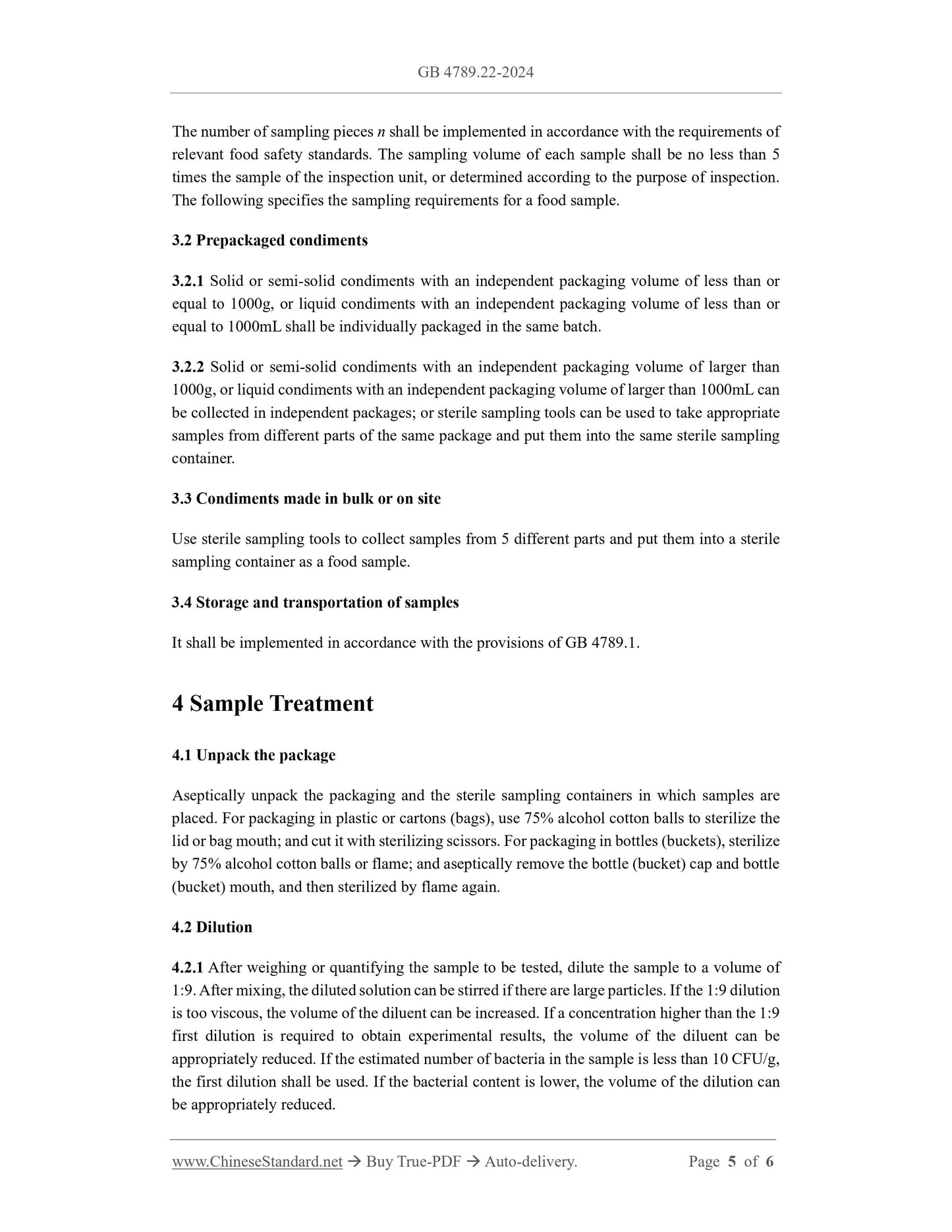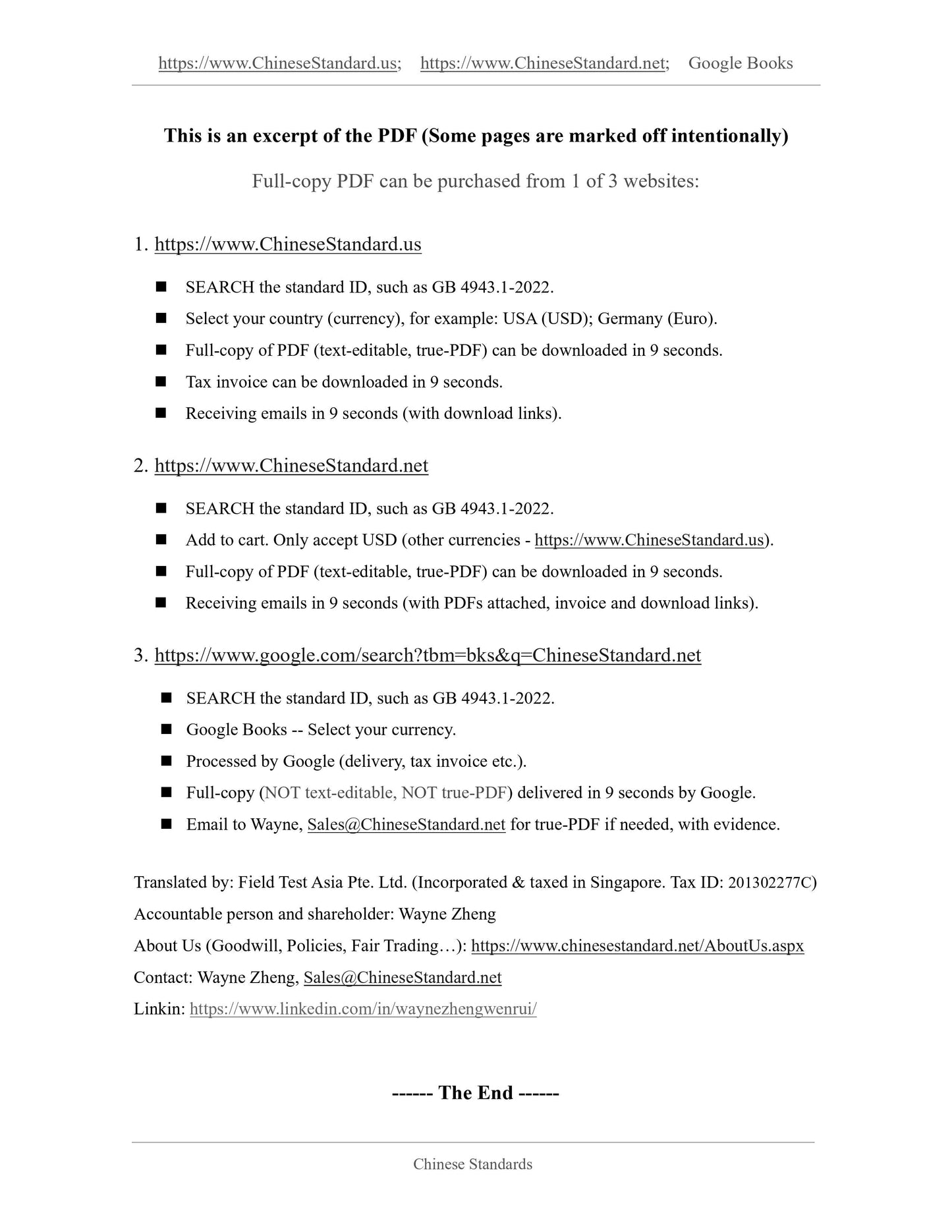1
/
of
5
www.ChineseStandard.us -- Field Test Asia Pte. Ltd.
GB 4789.22-2024 English PDF
GB 4789.22-2024 English PDF
Regular price
$80.00
Regular price
Sale price
$80.00
Unit price
/
per
Shipping calculated at checkout.
Couldn't load pickup availability
GB 4789.22-2024: National Food Safety Standards--Food Microbiological Inspection--Condiment Sampling and Sample Processing
Delivery: 9 seconds. Download (and Email) true-PDF + Invoice.Get Quotation: Click GB 4789.22-2024 (Self-service in 1-minute)
Newer / historical versions: GB 4789.22-2024
Preview True-PDF
Scope
This Standard specifies the sampling and sample treatment methods of condiments.This Standard is applicable to the sampling and sample treatment.
Basic Data
| Standard ID | GB 4789.22-2024 (GB4789.22-2024) |
| Description (Translated English) | National Food Safety Standards--Food Microbiological Inspection--Condiment Sampling and Sample Processing |
| Sector / Industry | National Standard |
| Classification of Chinese Standard | X09 |
| Word Count Estimation | 5,572 |
| Date of Issue | 2/8/2024 |
| Issuing agency(ies) | National Health Commission of the People's Republic of China, State Administration for Market Regulation |
Share
